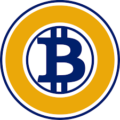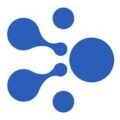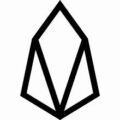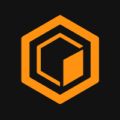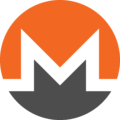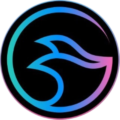Providers
What Is Bitcoin Gold (BTG)?
Bitcoin Gold was founded in 2017 to become a user-friendly alternative to Bitcoin. The BTG network aims to combine the security and sturdiness of the Bitcoin blockchain and its characteristics with the opportunity for experimentation and development.
BTG enhances and extends the crypto space with a blockchain closely compatible with Bitcoin but without using resources like Bitcoin hash power or vying for the "real Bitcoin" title. The company aims to present a coin with the implementation capabilities of Bitcoin, however, expanding on the opportunities for DeFi and DApp developers to use the coin.
What Is Optimism (OP)?
Optimism (OP) is a layer-two blockchain on top of Ethereum. Optimism benefits from the security of the Ethereum mainnet and helps scale the Ethereum ecosystem by using optimistic rollups. That means transactions are trustlessly recorded on Optimism but ultimately secured on Ethereum.
Optimism is one of the biggest scaling solutions for Ethereum with over $500 million in TVL. It is home to 97 protocols, the biggest being Synthetix (SNX), a derivatives exchange, Uniswap (UNI), a DEX, and Velodrome (VELO), an AMM. Users can begin their journey on Optimism by adding the chain on their Metamask and bridging tokens like ETH to the L2. On May 31, 2022, Optimism conducted a highly anticipated airdrop of its OP token.
What Is NEAR Protocol (NEAR)?
NEAR Protocol is a layer-one blockchain that was designed as a community-run cloud computing platform and that eliminates some of the limitations that have been bogging competing blockchains, such as low transaction speeds, low throughput and poor interoperability. This provides the ideal environment for DApps and creates a developer and user-friendly platform. For instance, NEAR uses human-readable account names, unlike the cryptographic wallet addresses common to Ethereum. NEAR also introduces unique solutions to scaling problems and has its own consensus mechanism called “Doomslug.”
NEAR Protocol is being built by the NEAR Collective, its community that is updating the initial code and releasing updates to the ecosystem. Its declared goal is to build a platform that is “secure enough to manage high value assets like money or identity and performant enough to make them useful for everyday people.”
Flux, a protocol that allows developers to create markets based on assets, commodities, real-world events, and Mintbase, an NFT minting platform are examples of projects being built on NEAR Protocol.
aelf is an open-source blockchain network designed as a complete business solution. The structure of ‘one main-chain + multiple side-chains’ can support developers to independently deploy or run DApps on individual side-chains to achieve resource isolation. aelf technology adopts Parallel Processing & AEDPoS Consensus Mechanism. Based on the cross-chain technology of the main-chain index and verification mechanisms, aelf achieves secure communication between the main-chain and all side-chains, as a result, allows direct interoperability between side-chains.
aelf meets the governance needs of varying applications by providing different models, including a Parliament Governance Model, an Association Governance Model, and a Referendum Governance Model. Through the incentive model, the network is equipped with a self-sustainable system and can roll out self-development on a practical basis. Simultaneously, developers can debug, develop and deploy applications based on a mature IDE, provided by aelf.
aelf has launched aelf Enterprise, an enterprise-level integrated blockchain solution. aelf Enterprise is based on the requirements of different business scenarios. To meet the requirements of several industries including supply chain management, credit establishment, user incentives, and property protection, aelf Enterprise provides enterprise-level users with a flexible, but practical modularized blockchain solution. This promotes the hand-in-hand development of both Blockchain and other core economies.
What Is Aptos?
Aptos is a Layer 1 Proof-of-Stake (PoS) blockchain that employs a novel smart contract programming language called Move, a Rust-based programming language that was independently developed by Meta (formerly Facebook)’s Diem blockchain engineers.
Aptos’s vision is a blockchain that brings mainstream adoption to web3 and empowers an ecosystem of DApps to solve real-world user problems.
The PoS blockchain can achieve a theoretical transaction throughput of over 150,000 transactions per second (tps) through parallel execution.
In March 2022, Aptos raised $200 million in a seed round led by the venture capital firm Andreessen Horowitz (a16z). Other crypto heavyweights like Tiger Global and Multicoin Capital took part in the funding round. Fast forward to July, the startup raised another $200 million in a Series A round with participation from Dragonfly, Apollo Global, Franklin Templeton, Animoca, Jump Crypto and others.
Two months later, Binance Labs made a strategic investment of an undisclosed amount in Aptos.
On Oct. 18, 2022, Aptos announced the mainnet launch, while the Aptos genesis occurred on Oct. 12, 2022.
What Is Core (CORE)?
Core (CORE) is built as an L1 blockchain that is compatible with Ethereum Virtual Machine (EVM), therefore it can run Ethereum smart contracts and decentralized applications (dApps). The Core network is powered by the “Satoshi Plus” consensus mechanism, which secures the network through a combination of delegated Bitcoin's mining hash and delegated Proof-of-Stake (DPoS). The protocol is backed by its native token, CORE.
The developers of the project strive to create an infrastructure that operates at the core of web 3.0, offering revolutionary ideas to solve the blockchain trilemma.
The mainnet was launched in January 2023. The blockchain is governed by a decentralized autonomous organization (DAO), where the Core DAO is responsible for the development of the Satoshi Plus ecosystem.
What Is Monero (XMR)?
Monero was launched in 2014, and its goal is simple: to allow transactions to take place privately and with anonymity. Even though it’s commonly thought that BTC can conceal a person’s identity, it’s often easy to trace payments back to their original source because blockchains are transparent. On the other hand, XMR is designed to obscure senders and recipients alike through the use of advanced cryptography.
The team behind Monero say privacy and security are their biggest priorities, with ease of use and efficiency coming second. It aims to provide protection to all users — irrespective of how technologically competent they are.
Overall, XMR aims to allow payments to be made quickly and inexpensively without fear of censorship.
The live Manta Network price today is $3.63 USD with a 24-hour trading volume of $398,620,128 USD. We update our MANTA to USD price in real-time. Manta Network is up 2.16% in the last 24 hours. The current CoinMarketCap ranking is #71, with a live market cap of $909,896,913 USD. It has a circulating supply of 251,000,000 MANTA coins and a max. supply of 1,000,000,000 MANTA coins.
If you would like to know where to buy Manta Network at the current rate, the top cryptocurrency exchanges for trading in Manta Network stock are currently Binance, Bybit, Bitget, LBank, and DigiFinex. You can find others listed on our crypto exchanges page.
What Is OKB (OKB)?
OKB is a cryptocurrency released by the OK Blockchain Foundation and Maltese crypto exchange, OKEx. The exchange is one of the largest in the world and currently ranks third in liquidity, fourth in trading volume, and provides a wide selection of trading pairs. OKEx is similar in many aspects to the cryptocurrency exchange giant Binance, but there are a few key differences. The OKEx platform has its own cloud mining service, and the company has a more focused reach in providing options trading for users. Meanwhile, Binance strives to offer a broad range of crypto services globally.
OKB is the OKEx utility token that enables users to access the crypto exchange's special features. The coin is used to calculate and pay trading fees, grant users access to voting and governance on the platform, and reward users for holding OKB.
OKEx has become a world-leading trading floor since its launch in 2017. The platform launched in the spring of 2017 and emerged as an offshoot from the original OKCoin platform (operating since 2013 in China). OKCoin now focuses on exchanging fiat for crypto, while OKEx focuses on crypto trading with a built-in API for algorithmic trading. The exchange also gives users access to a multi-currency wallet and functions for margin trading.

